Glossary of Representational Research
Compiled by Jeannie Pace, Latayne C. Scott, and J. Michael Strawn
Note: Representational students are encouraged to post comments at the end of this document. In those comments, please ask for definitions of other terms found on this website and we will try to define and add them to this Glossary as a living document.
Also note: Terms in bold within a definition are defined more fully elsewhere in the Glossary.
Abduction: a mental process by which conclusions are reached. This term was coined by Charles Sanders Peirce to distinguish it from the processes of induction and deduction. In Biblical thinking, it is the process by which generalizations are reached using the Text as an agent on one’s own intellect. Abduction is an example of a term used in Representational Research which has been “kidnapped” because of its precision. Other are similarly utilized from the disciplines of linguistics, mathematics, and other areas.
“Across the hinge“: An expression derived from use of the hinged Three-D Model of Reality to describe the action of moving from one side to the other.
Agent: Something that initiates action. In Representational Research God’s Word is the agent. The human mind is presented to Scripture to be analyzed, evaluated, and otherwise treated. The human mind’s proper relationship to Scripture is never agent, but always the patient.
Agent/patient relationship: an assessment of two elements in which one is active (agent) and the other is passive (patient.) (Memory key–a real estate agent is active, when you are lying in a hospital bed as a patient, you are passive.) Moreover, the agent exerts force upon the patient which receives the action. Much of the focus of representational thinking is to make sure that the Bible is always regarded as agent and our lives, thinking, and circumstances as patient.
Analog Intelligence: Godly intelligence that functions with information not derived from one’s surroundings, culture, or own inherent thought processes; Intelligence as formed and directed by the thought forms of God as revealed in Scripture. Its antipode is contextual intelligence which is thinking informed by one’s surroundings (physical, cultural, etc.)
Antipode: That which functions in the exact opposite manner of, or opposes, another element.
Application: When used without first generalizing, application is a way of dealing with a textual passage that relies on treating Scripture as the patient instead of the agent, allowing personal experience to be the agent. Application aims to draw parallels between one’s own situation and that of somebody or some concept in Scripture. Contrast with generalization.
Bible: A supernatural document that is a sufficient and accurate accounting of the mind of God and its interworkings with history and the minds of people in history. Because the Bible is inspired by God Himself (and is in fact the mind of God in written form), it is the only reliable source of information about how to live life on this planet. Though it demonstrates the thinking processes of God, His intelligence and knowledge surpass it.
Bohr’s Quantum Complementarity Theorem: a 20th-century concept formulated by Neils Bohr, which looks for opposite yet complementary aspects to all things. Such is only a function of contextual intelligence: it removes all gulfs of disparateness, and of course this theory has had great impact upon sociological studies in which even good and evil can be seen as “complementary.”
Commutative, non-commutative: Adjectives describing movement (memory key: commuters go back and forth between two sites). The movement of power in the stacked indices of The Three-D Model is noncommutative; that is, power originates in the unseen and moves to the seen, never the other way around. Non-commutative movement, thus, is unidirectional.
Competence: the quality of supposed ability of man to accomplish tasks.
Containment: A specific defined area, whether it be physical (the tabernacle) or spiritual (the nation of Israel). See lesson on “The Rules of Containment.”
Contextual Intelligence: Worldly intelligence that makes assessments and decisions based on the context or surroundings of the individual.
Cosmology: Used similarly to the concept of worldview–a complete system of thought that allows a person to process new information based on previously-held notions.
Degenerate: an adjective used to describe something which is functionally incomplete. In this sense, no moral meaning is attached to the word.
Duality: The Enlightenment concept that reality is composed only of two parts: man (the observer) and his surroundings (the observed.) These two elements are supposedly separated by what is called a Cartesian Partition (named after Renee Descartes, who wrote of it.) Representational Research asserts that there is only one reality which has a seen part, an unseen part, and a necessary link or system of links between the two. See Three-D Model of Reality.
Domino Effect: The concept that an event or circumstance will determine an outcome, just as one domino falls onto another: a dyadic or two-part process. The Domino Effect opposes the biblical understanding that such actions are triadic; that is, supposedly causative agents must be connected or indexed by the will and power of God to every effect. Thus: a precipitating or preceding agent or event is linked or indexed in some way (such as will or power) of God to the result.
Empirical “truth”: That which is observed by the unaided human mind and seems to be self-evident and thus considered a reliable basis for assessment and decision making.
Equidistance: The concept that since God lives outside of time, He is equidistant from all events in time. Furthermore, since all facts of history are inaccessible except through representations (and the only completely reliable source of representations about history and reality is the Bible), thus each believer accessing those representations is equidistant from all events in Biblical history.
Errors, fiction, lies: As opposed to a True Narrative Representation, errors, fictions and lies each have degenerate linkages of facts, intentions and their representations.
Fictions are demonstrated below.
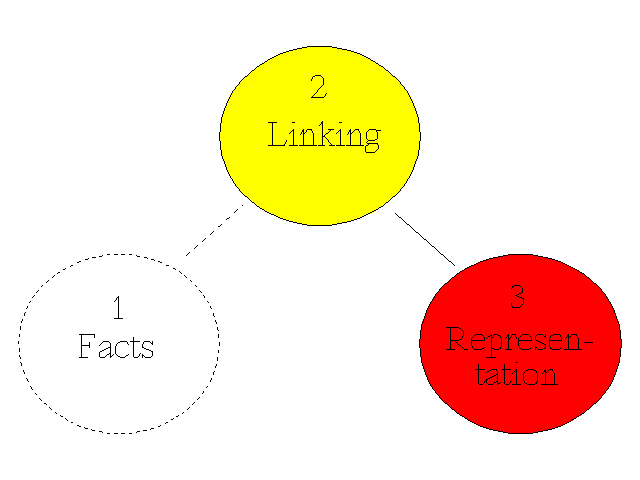
Errors:
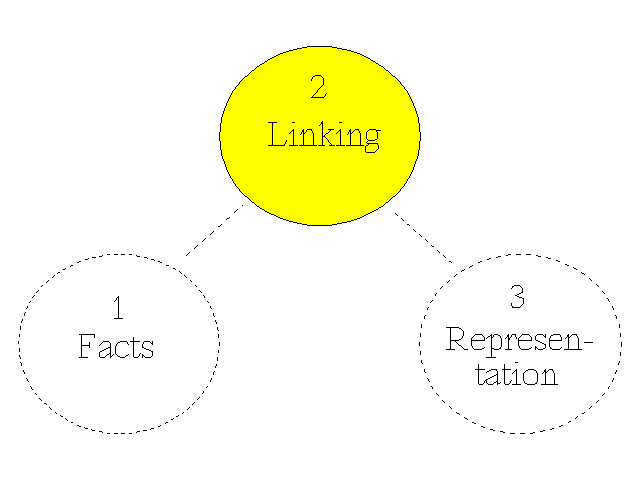
Lies:
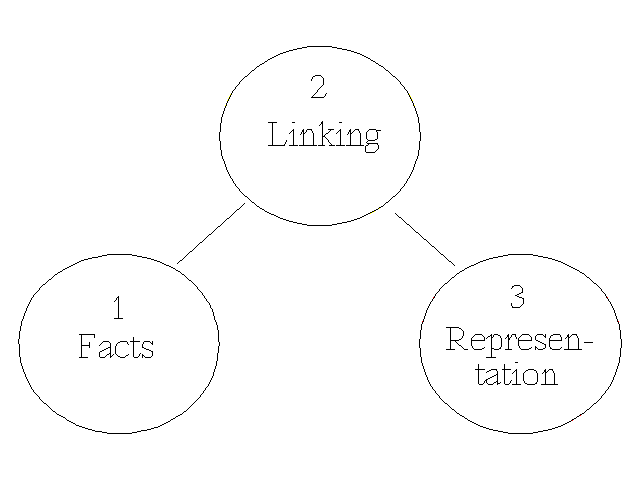
Eternity: Most accurately defined as not-time.
Eternal Moment: the convergence of the eternal into the temporal creates a unique kind of time we refer to as an “eternal moment.” See also simultaneity.
Exegesis: a systematic attempt to look at Scripture passages in such a way as to try to ascertain what was meant by the original writers. Exegesis requires that a passage be examined in its original context, identifies what genre it was written in, looks at what historical events surrounded the passage’s subject matter, searches for what issues the writer of the passage put particular emphasis on and focuses on nuances of the original languages. Though this approach has its merits (especially the considering of the relationship of a text to its surroundings in a linguistic sense, and the relationship of a text to the rest of the Bible), Representational Research asserts that the Bible’s truths through generalization are accessible to believers, as they have been for millennia, without outside study aids.
Extrusion: The process by which God exerts power into the world and into the believer. Its two avenues are revelation and power.
Fact: An element of reality which must be linked to a representation in order to be accessible to us. Examples of facts are people, places, conditions, objects. (The use of the word fact in this sense, it must be noted, has nothing to do with the inherent truthfulness of the thing–a frivolous lawsuit is a fact, even though it is based on falsehood, for example.) Another way of defining a fact is as something that can be in some way represented; something that is “noticeable” in the words of Dr. John W. Oller Jr. Facts can also be outside of the physical world –examples are dreams, emotions and even things that are imaginary and fantasy (you can picture in your mind, or represent, a unicorn, for instance.) Since a fact is anything that can be represented, we access facts through three types of representations: iconically (through the senses), indexically (by linking things together) and linguistically (though language whether written, spoken, or in the mind.) In fact, our ONLY access to all the facts of our existence is through representations. In daily life, usually a fact causes a representation to arise in the mind. However, as God operates– such as in His speaking into being the world–His representations actually precede and form facts.
Faith: the act of giving more weight to the unseen realities revealed by God than the visible side of reality. Faith is an intentional strategy to suppress national representations and human reasoning. Faith does not expect reasonable outcomes and perceives a supernatural advantage. Faith is a structure by which we deal with God first and directly and resist dealing with the mechanics and circumstances of the real world. Faith is successful when God’s representations are elevated over natural representations. In the Three-D Model of Reality, faith is an indexical element which links man to the unseen, with a noncommutative source (God). It is a function of revelation.
Formal correspondence: The relationship of a linking element that connects the otherwise disparate concepts of fact and representation.
Free associations, free abductions: Conclusions reached by any means other than adherence to Scriptural thoughtforms.
Function: The way in which something is derived from something else. Specifically, each element of the stacked indices of the Three-D Model of Reality is a function of that which underlies it: for example, revelation is a function of the Holy Spirit; manipulation of symbols is a function of faith, etc.
Generalization: A generalization is a statement regarding a specific Scriptural passage that is language that is parallel to the text (as opposed to a statement which merely restates it.) One who generalizes will be able to look at a passage, and extract a principle from it: a principle that is true throughout Scripture, a principle that will help with specific situations in life. Once that principle is seen, a person can create parallel language to the biblical text. Biblical generalization has safeguards built into it: If a principle is a generalization of one passage, the generalization has to be consistently true throughout Scripture. Another way of saying that is: A generalization is a conclusion reached after reading a section of Scriptural text; one which uses the underlying principles and thought processes of God to extend to all applicable cases.
A generalization requires that the Bible serve as agent on the mind and experience of the reader. Thus, all human experience would be categorically excluded from the agential role. Most generalizations from Scripture are counter-intuitive because one must elevate the representations of Scripture above one’s experiences.
A generalization is a linguistic continuum. It is words that are the end result of a sequence, one that originates in the mind of God, a sequence that is in one sense actually an ordering in the human mind the intentions of God. Generalizations assume Scripture has meaning beyond linguistic structure that can be articulated.
God: the eternal Being whom we worship, as an entity who is triadic in nature.
The Highest One encompasses our understanding of Him as Father, and as Son, and as Holy Spirit.
God (the Father): The first personage or element of the triune Godhead. In representational thinking, He is exemplified by the unseen or eternal element of reality.
Godhead: An expression of the triune or triadic nature of Deity in which three Persons have both unity and some distinction from each other. See illustration.
Gulf: a space or concept of incommensurability that exists between two disparate things. In representational thinking, there is a gulf between facts and representations (bridged by the indexing action that is a formal correspondence); an absence between the seen and the unseen (bridged by the indexing action of the Holy Spirit and the other stacked indices). See illustration.
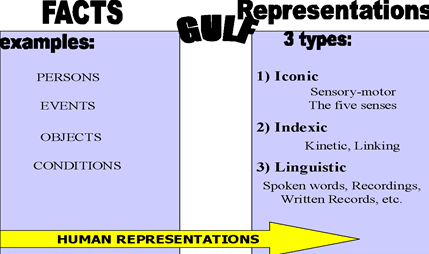
Holy Spirit: He who should be seen and referred to as God—not just coming from the Father (though He does) and not just representing the Father to us (though He does that too). The Holy Spirit can be grieved and angered and sinned against Someone who listens carefully to the Father and conveys information in a role similar to that of the Son while He was on this earth. Thus, this Personage or element of the Godhead among other things serves as an index or linking agent that is elementally the basis of communication with and connection with the unseen side of reality.
Iconic representation: the way in which we access the physical facts of our world through the senses. When we look at a mountain, for instance, and then turn away, we carry in our heads an iconic representation of that fact (the mountain.) Through the five senses, we come into indirect contact with our surroundings. Even the sensation of pain, for instance, is indirect in that when we make contact with something that, say, burns us, we only carry the icon of pain in our brain, not the physical object which caused the burn. Iconic representations are sensory-based conveyors of information. They have to do with sensory functions of our bodies and brains, and include information accessed through the five senses. The Bible shows us that God programmed iconic or sensory representations into our thinking, but He forbids us to operate on those things alone.
Incommensurable: an adjective used to describe things that cannot be reconciled, that have no inherent connection, are not measured in the same way, are qualitatively different, “apples and oranges.” (Can also be used as a noun.) An incommensurable is often an antipode, though not necessarily so.
Index: That which points to or connects two otherwise unlinked elements. (Memory key: the index in the back of the book links the page numbers with the information you seek.) In traditional semiotic thinking, the index position is called a formal correspondence that links facts to representations. (See image under the glossary entry Gulf.)
In the Three-D Model of Reality, each index is a connecting action (and thus kinetic) between the seen side of reality and the unseen. Each index connects concepts from God to our mind. God’s indices (plural of index) are active, but the action is asymmetrical or “non-commutative” because each originates not in the seen side with the mind of man, but in the unseen side, with the mind of God. Such specific indices do not commute back and forth with us informing God in the way that He informs us. Most symbols are indices.
Inflection: The process by which God changes an individual or a circumstance, changing him or it just as the process of inflection on a verb changes its function and purpose.
Jesus: The eternal uncreated Son of God, Himself equal to God though Jesus submitted to the Father. He was agential in the creation of all things and, though He was in the form of God, emptied Himself and became like a man. (Colossians 1:16, Hebrews 1:2). The Son went about all He did, visible to—and vulnerable to—human beings, but always insisting that He, Jesus, was submitting to the personality of the Father and perfectly representing the Father to humankind. In representational thinking, this personage of the Godhead represents the seen side of reality by virtue of his life on this earth.
Linguistic Representation: the most precise representation. Linguistic representations include written words, spoken language, and thoughts. Linguistic signs may represent icons, indices, or other word-type symbols. The greatest amount of voluntary control is involved in our use of linguistic or symbolic representations. With them, we can represent the facts of our lives truthfully (or we can choose to fabricate fantasies, commit errors, or even invent lies if we choose. Linguistic representations, not iconic (sensory) nor indexical (sensory-motor linking) ones, are the very kinds of representations that God chooses to use to deal with us.
Manipulation of symbols: In the Three D Model of Reality, the uppermost or top level on the stacked indices, built in a sense on preceding levels of the Holy Spirit, revelation, and faith. In some depiction of the Three D Model of Reality, manipulation of symbols is reworded as “words and actions.”
Myth of Historical Distance: Facts are accessed only through representations so we are all equidistant to all representations. The only completely reliable representation of the past, whether it be of “historical” past or one’s own “personal” past, is the Bible. It is a myth to think of Bible events as being “way back there” in time, while thinking of our own experiences as more immediate and thus closer to us.
Natural: of human origin and based in our central nervous system. I acknowledge the substance of my events and circumstances, but these facts do not form me or determine the outcome.
Necessary vs. Determinant: Two terms relating to what others might call “natural processes.” An example of what is necessary for a crop is the planting of a seed. However, that action does not necessarily result in a crop (is not determinant, though necessary.) In the greater sense, given the sovereignty of God who can raise the dead, there is no human action that is determinant except obedient faith.
Obedience: taking God’s Word and forcing it onto my experiences.
Objectification: The concrete result of the extruding power of God in the life of an individual, in a situation, or in creation.
Ontology: the result of the action of giving something the status of being “real.”
Parallel Language: The result after reading the Text and extracting a principle that can be stated in such a way that it is a valid generalization and not just a restatement of the Text itself. A valid generalization will be supported with parallel language.
Patient: That which receives an action. In Representational Research, the human mind is presented to Scripture (agent) to be analyzed, evaluated, and otherwise treated. The human mind’s proper relationship to Scripture is always patient.
Periodization of Scripture: The process by which people believe that an incommensurable gulf of time separates us modern readers from the events of Scripture and thus Scripture has lost direct effect and applicability for us.
Personal Experience: a current representation of the past, an event or a circumstance. Without a deliberate, willful, sometimes painful effort, personal experiences will trump God’s linguistic representations.
Plenary reality: A concept of reality that includes both the seen and the unseen as both valid while giving greater ontological status to the unseen realm of God.
Prefix: In grammar, a prefix is the first meaningful element of a word, and has the power to change or modify the syllables that follow it. In this discussion, it is used to depict pre-existing conditions of a mental or spiritual nature that affect those things which follow.
Prophecy: Information that comes from God, is a verbal (or sometimes, visual/auditory symbolic) representation that will precede, and form facts. True prophecy from God always eventually becomes fact on the “seen” side.
Reality: There is one reality but it has two parts. There is the part you see, and the part you do not see, and the essential links provided from God. We live here on this earth and are surrounded by the facts of our material existence, but there are other, invisible elements that are just as “real” as the ones we see.
Representation: It is only through representations that people organize the world and access seen reality through the act of symbolizing its elements. There are three types of representations: iconic (mainly sensory-motor), indexical (linking or kinesthetic), and symbolic-linguistic (mainly having to do with language.) This process in the natural world usually takes this form: facts seem to cause representations in the mind of the viewer (thus in most cases, the facts precede and formulate the representations.)
In other senses, representations can precede and form facts (an artist starts with an idea that becomes a painting, for instance) and this is especially true in the case of God, whose words (representations such as “Let there be light,” preceded and formed physical facts.
Since representations are the only way through which we access the facts of our existence, it is evident that in human beings, there is an increasing amount of will involved in representations progressing from iconic to indexical to symbolic. For instance, there is little will involved in the representation of a sharp blow to the knee; an increasing amount of will in choosing to link similar situations together, but a greatest amount of will involved in how we symbolize (talk about, write about, think about) a fact. Fiction, errors and lies can have representations, but does not make them true.
Representational Research: a training or ‘theology’ that puts the mind under the authority and control of revelation (the written Word of God); which is always subordinate to the mind of God. The goal of representational research is to help people look at the way they represent the facts of their lives. Are the facts representations of God about reality, about the world, about our lives or our own representations? Also inherent to Representational Research is an examination of the relationship of facts to the ultimate representation of reality, the Bible. The skill or “power tool” of Representational Research is the practice of generalizing about specific texts in the Bible.
Revelation: the divine or supernatural disclosure to humans of something (which could not otherwise be known unless He reveal it), conveying information about the seen and/or unseen aspects of reality.
The types of revelation include:
*General revelation –that which demonstrates the divine nature and power of God, as in creation (Romans 1:18-20).
*Mankind as image bearers of God
*Dreams, impressions on the mind, visual symbols from God
*Advice from godly friends
*Jesus Christ – the express image of the Father
*Bible – functions as a link to the mind of God
Specific revelation refers usually to linguistic or symbolic communication from God to man, exemplified by Holy Scripture. This index links us to the unseen world, and is a function of the stacked index that undergirds it, the Holy Spirit.
Rhetorical examples (exemplars): Persons whose actions show that they have given greater ontology to unseen realities than to the contextual situations in which they find themselves.
Rhetorical reality: A concept of reality that is predicated upon the insistence that God’s Word is the only and final arbiter of what is real.
Scientific Method: The sense that processes are reproduceable with identifiable natural causes and results.
Scenario: A supposition about a hypothetical or potential situation; often signaled by phrases like, “What about. . .” or “What if. . .?”
Self-reference: The quality that causes a person to evaluate everything on the basis of his or her own preferences; in a broader sense, the tendency of humans to qualify everything in terms of human wisdom. “Man is the measure of all things,” a Renaissance saying, is illustrative of this kind of thinking.
Semantic Net: a term describing the result of the interlacing effect of context, be it situational context, linguistic context, or other. Unlike Scripture, which is its own context, a semantic net mires the observer into its comprehension.
Semiotics: a branch of linguistics which recognizes the triadic structure of language, and from which many of the terms of representational thinking are borrowed.
Sensorium: Technically, the area of the brain where sensory icons are processed (sight, sound, touch, etc.). Used in representational thinking to denote our sensory reaction to our surroundings.
Simultaneity: That state in which the thoughts of God and His purposes are concurrent and harmonious in their effect upon the mind of a believer.
Sin: A trespassing past limits or protections of God, with resultant consequences. The essence of sin is to embrace the representations of material facts in preference to God’s representations of those facts.
Soteriology: theological term concerning salvation.
Stacked indices: On the Three D Model of Reality, these elements are four layers: Holy Spirit, revelation, faith, and manipulation of symbols (or thoughts, words, actions). Each has its origin in the unseen and links it to the seen.
Statistical regularity: The result of observing that, without divine intervention, certain processes seem to be so dependable as to be automatic. Representational thinking, however, contends that such observations are based on seeing results and not taking into account God’s intimate involvement and individual decisions in even such “natural” things as the daily rising of the sun. (See Domino Effect.)
Symbols: Symbols have three main types: icons related to our senses; indexes or things that seem to point to something else; and written and spoken words. Baptism is a symbol, a representation of a fact that exists in the mind of God, of how He wants to cleanse us; as well as a participation in the death, burial and resurrection of Christ.
Teleology–a mental construct which is focused upon results or end products. (Memory key: part of its linguistic root involves the thought of distance: telephone, telegraph, etc.) It is goal-oriented, setting up what we might call a syntax or order of completion.
Temporal philosophy is the attitude which each person uses to understand and live in his or her world. Sometimes the term “worldview” carries the same meaning.
Thematic: a diagram that illustrates in a concrete way a concept or Scriptural passage.
Therapeutic community: Term used to describe health professionals (both mental and physical) and the culture or ambiance in which drives decisions by such.
Triadic: That which consists of three related people or things.
Example: God the Father dwells on the invisible side and has an unseen nature.
Jesus came here to reveal what we could not see – He was the visible reality.
The Holy Spirit that links the seen and unseen sides together.
Triadic structure: A tri-partite structure is inherent not only to the Godhead; but to the nature of reality as depicted by the Three D model of Reality. Even our thinking processes mirror this triadic structure as we link the facts of our existence to the way that we represent them. All triadic structures show a linking between facts and representations in some form.
Three–D model of reality: Conceived of by Mike Strawn, this is a concrete way of depicting reality by means of a gable-shaped device. One side shows the seen side of reality; the other the unseen. The stacked indices “lap over” from the unseen side to the seen side.
“Top-down universe“: A term used to describe the way that power emanates from God and affects this world–not the other way around.
True Narrative Representation (TNR): According to Collins and Oller: “The Bible represents itself to be a true narrative representation from beginning to end. Its main protagonist from Genesis to Revelation is God. Because the events reported are supposed to unfold over time, from God’s creation of the universe, to his redemption of mankind, the whole scriptural message, as a predication or statement from God to man, is a narrative. Because the story claims to be true, it claims to be a true narrative. Moreover, the narrative in question is peculiar in view of the fact that it purports to be comprehensive. It claims to cover all time from the creation to the end of time itself.” See “Is the Bible a True Narrative Representation?” Another resource: Dr. Scott’s article on True Narrative Representations. Also, contrast errors, fictions, lies. See illustration below for Dr. Oller’s depiction of linkages in a True Narrative Representation.
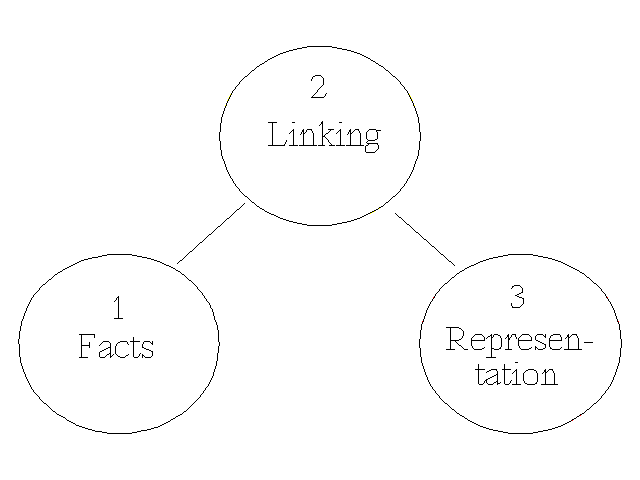
Visible: The seen side of reality, accessed naturally through representations.
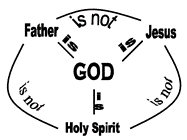
Thank you for this glossary, I know it will be very helpful for me.